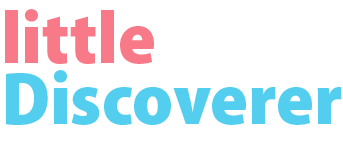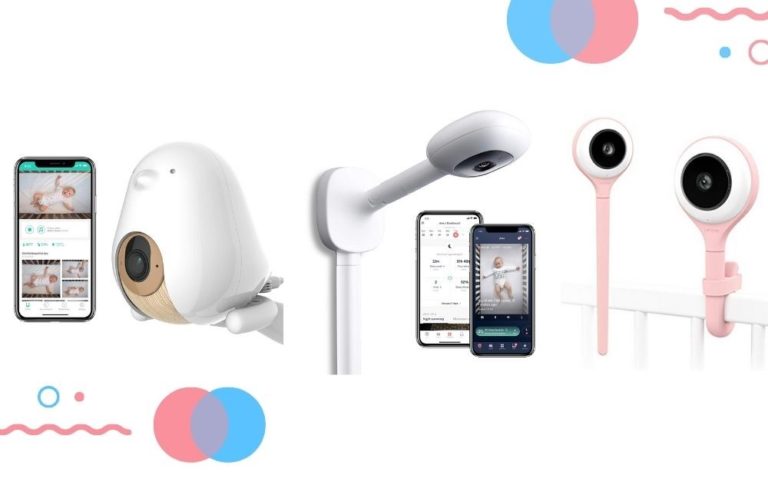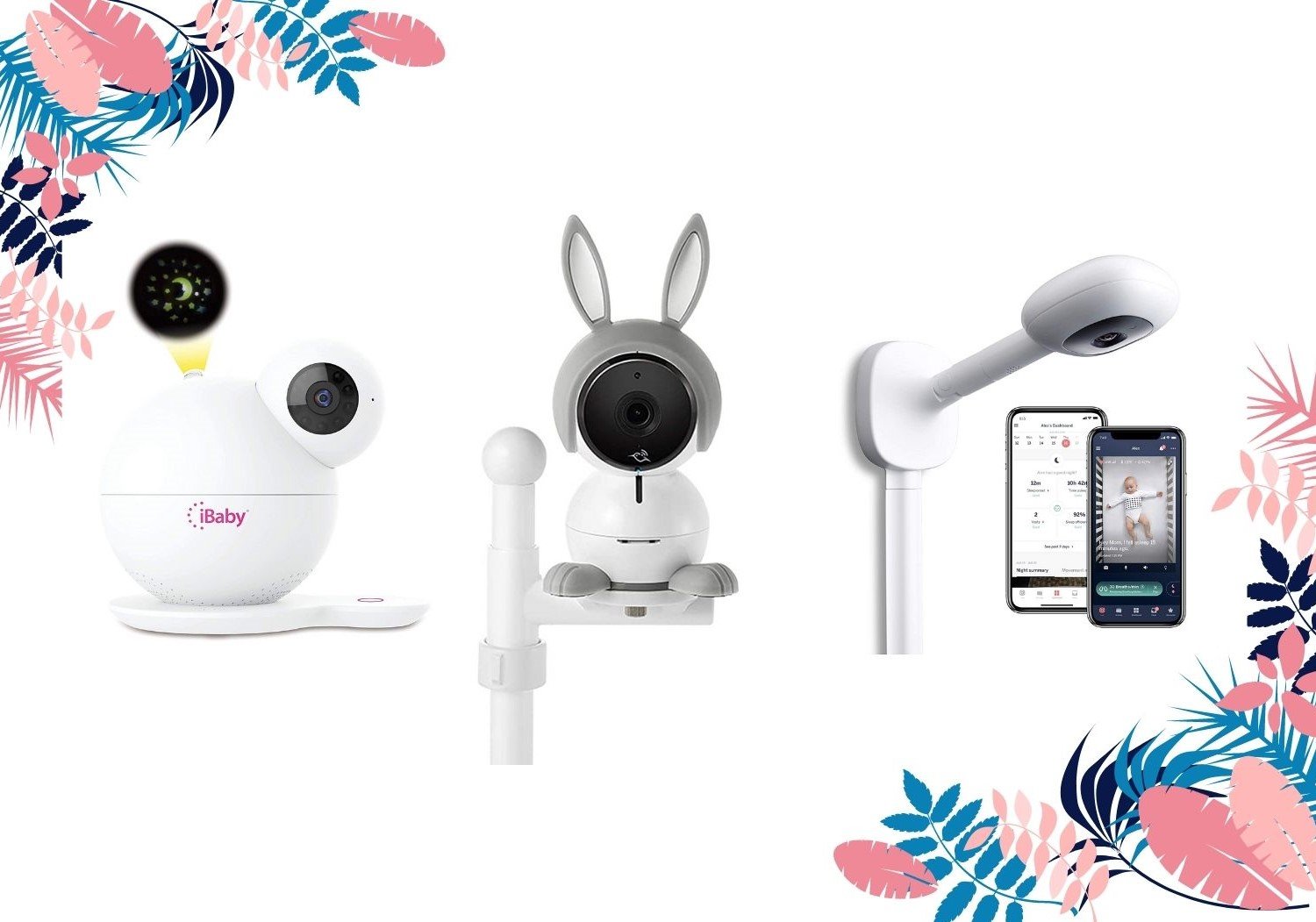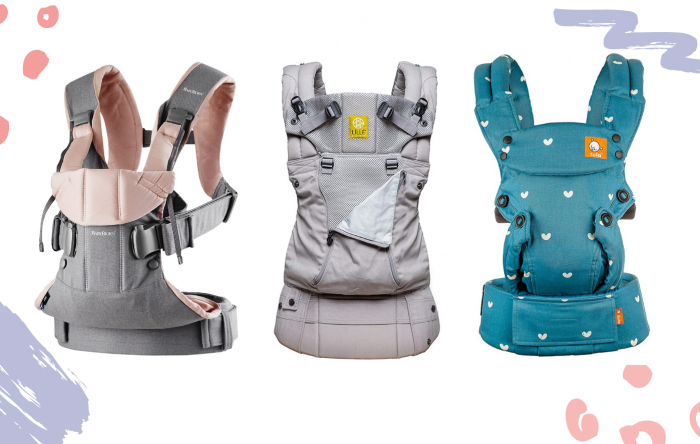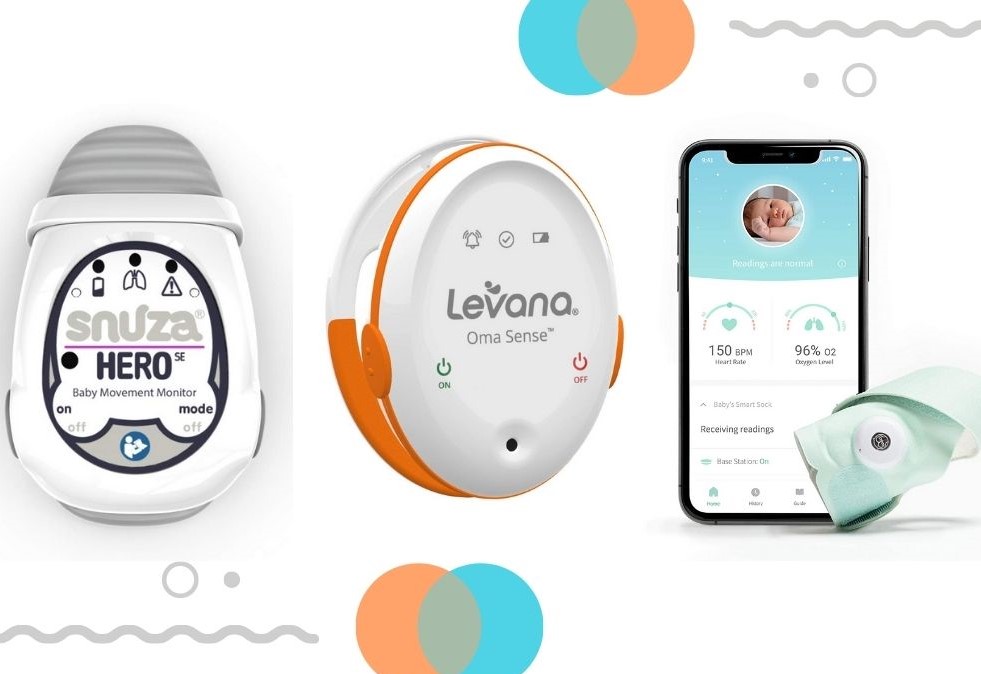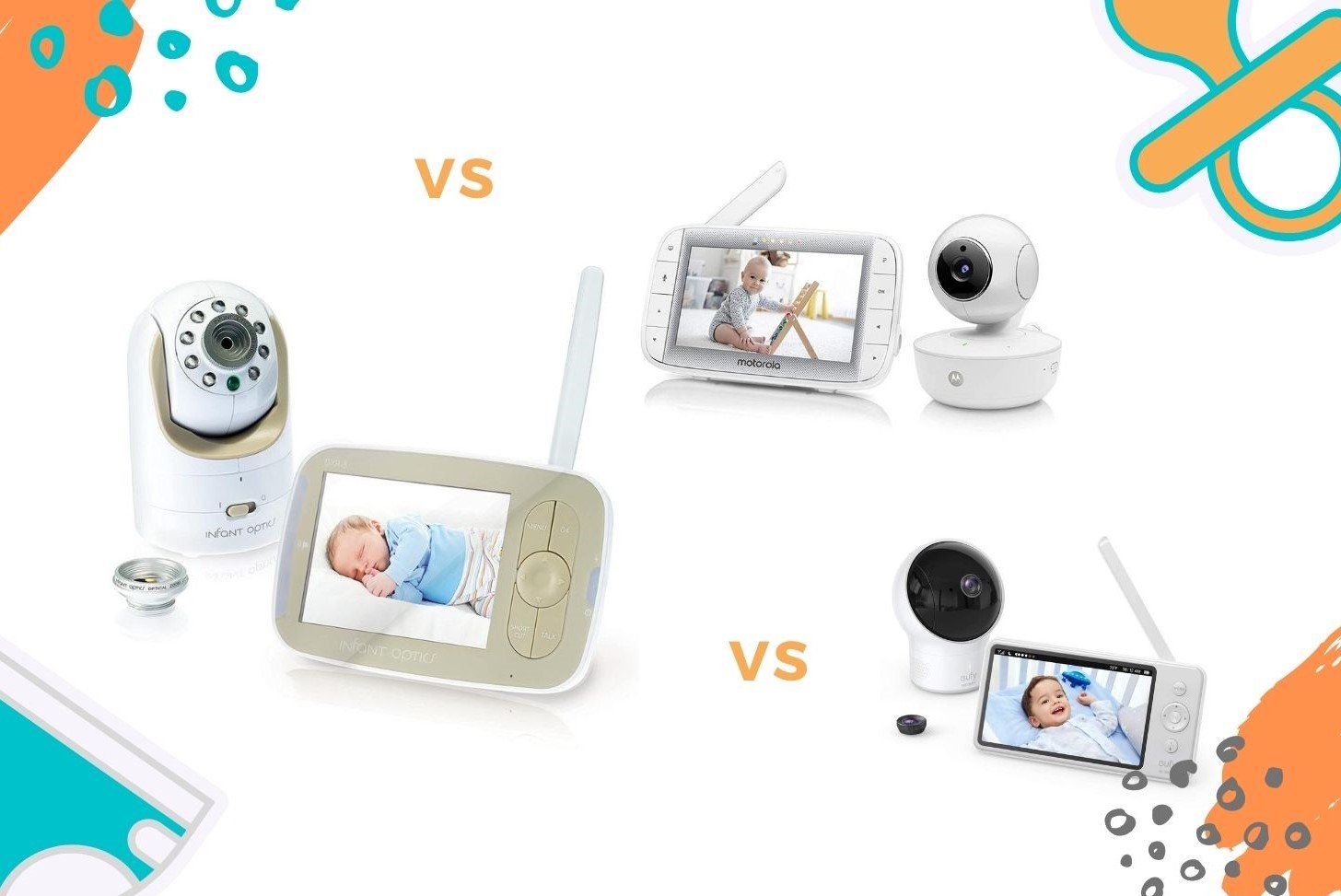Can’t make up your mind about whether you should get Cubo Ai vs Nanit Plus vs Lollipop Baby Monitors? It’s difficult to compare these three baby monitors without digging deeper into their respective pros and cons. That’s what we will do in today’s article.
There are many different types of baby monitors: sound-only monitors, video monitors, breathing monitors, smart monitors… no wonder that first-time parents can be bombarded with loads of information out there. We have done comprehensive baby monitor comparisons in other articles. Today, let’s shift our focus to these three popular smart monitors: Cubo Ai Plus, Nanit Plus, and Lollipop Baby Monitor.
For those who are in a rush, you can jump to the COMPARISON section or the PRODUCT REVIEW section directly. Let’s dive right in.
Our Final Verdict
Winner: Nanit Plus Smart Baby Monitor
It monitors baby’s sleep pattern, sleep quality, and breathing. It’s reliable and accurate.
Best High Tech: Cubo Ai Plus Smart Baby Monitor
It uses AI to detect and alert parents when baby might be in danger. It has the best video quality.
Best Budget: Lollipop Baby Monitor
It comes with all features and allows you to pay only what you need. It has an adorable design and is easy to mount.
Types of Baby Monitors: Which One Do You Really Need?
Before you start selecting the brands and models of a baby monitor, we need to take a step back and see what’s out there in today’s market.
There are many different types of baby monitors. They vary not only in features but also in price and configuration.
Below is a general guide to help you determine what types of baby monitor you may need:
- Sound-Only Monitors are recommended if you only need to use the monitor when at home and you are concerned about data security and privacy.
- Non-wifi Baby Monitors are recommended if you want the ability to see your child but don’t need to stream the video. This is suitable for parents who only use the monitor in the house.
- Wifi Baby Monitors are recommended if you need to check on the baby when you are outside the house, for example, in the workplace or grocery store. These monitors use your smartphone as the parent unit and allow you to see your child at any time.
- Smart Baby Monitors can track additional data such as sleep patterns and breathing. It is recommended if you want more statistics about your newborn or infant.
- Breathing Baby Monitors can only track your child’s breathing pattern. They can be inexpensive and easy to use. They are recommended for parents of newborns to keep an eye on a child’s breathing. It’s not needed for bigger kids.
Having more functionalities doesn’t always mean better. It can also mean more money, more maintenance, and more dependencies. That’s why we suggest that you choose a baby monitor that meets your need but is not overly fancy.
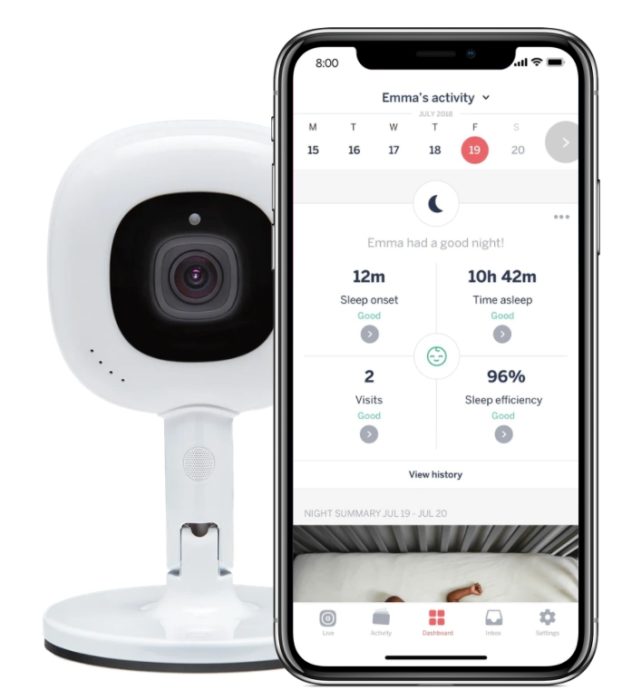
How to Evaluate Cubo Ai vs Nanit Plus vs Lollipop Baby Monitors
Among all the types of baby monitors, what Cubo Ai, Nanit Plus, and Lollipop have in common is that they are all wifi-connected smart baby monitors that allow you to watch your baby through a smartphone.
When evaluating the pros and cons of each of these models, you can use the following key points as guidance.
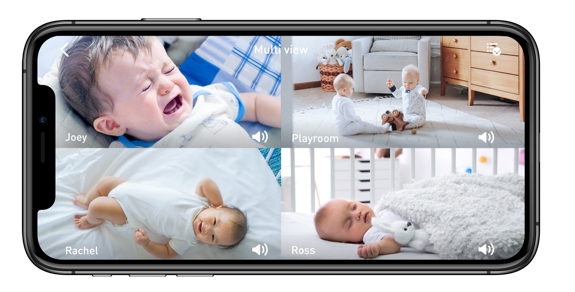
Comparison of Cubo Ai vs Nanit Plus vs Lollipop Baby Monitors
So what are the main differences between Cubo Ai vs Nanit Plus vs Lollipop Baby Monitors? In this section, we will do a comprehensive comparison.
1. Camera Lens Features
Similarities: Cubo Ai vs Nanit Plus vs Lollipop baby monitors feature camera lenses that provide a wide-angle view (or bird’s eye view). Therefore, none of them can mechanically pan or tilt. If you need to change the angle of the camera, you can only do so manually by adjusting the position of the lens. In terms of zooming, all three cameras allow you to zoom in and out digitally.
Differences: The field of view for Cubo Ai and Lollipop lenses is 135 degrees while the angle for Nanit Plus is 130 degrees. It won’t make much of a difference if your baby’s room is of standard size. But a lens with a wider angle will be better for small rooms.
2. Video Resolution
Differences: The monitor with the best picture quality is Cubo Ai, which sports 1080p HD image resolution. The resolution for Nanit Plus is 960p and for Lollipop is 720p.
Normally, video streaming is clear and crisp during the day because there is adequate daylight. But the resolution can have a big impact in dim or no-light conditions. Therefore, you will see a much clearer video using the Cubo Ai at night.
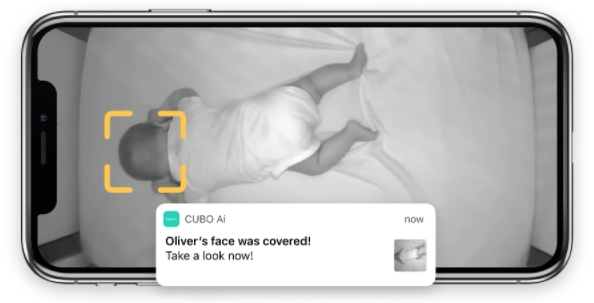
3. Metrics Tracked
Similarities: Cubo Ai vs Nanit Plus vs Lollipop can track a baby’s sound, detect a baby’s cry, and monitor a baby’s sleep pattern.
Differences: Both Cubo Ai and Nanit Plus monitors can monitor room temperate and humidity. For Lollipop monitor, you will need to purchase a separate sensor to monitor these two metrics. The built-in sensor on Lollipop can only track sounds.
However, Nanit Plus can also track your baby’s breathing through a separate Nanit Breathing Wear. That way, you don’t need another system to monitor your infant’s breathing pattern.
Another difference is that, even though all three monitors can track a baby’s sleep pattern and allow you to view the sleep analysis through the phone app, Lollipop requires a subscription in order to use the sleep tracking feature.
Lollipop has four subscription plans, but you will need to get the Premier Plan ($99/ year) or the Elite Plan ($199/ year) for sleep tracking.
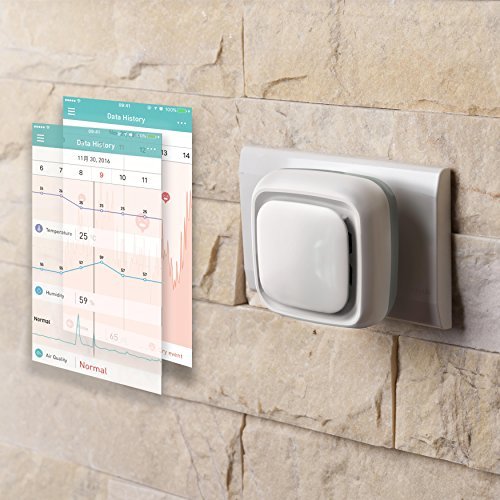
4. Recording and Playback
Similarities: All three baby monitors are capable of recording and playback, but the time limit is different. Additionally, they all have subscription plans through which you can get additional recording features.
Differences: Cubo Ai baby monitor allows you to scroll back through your child’s last 18 hours. It’s worth noting that Cubo Ai also has a subscription called “Cubo Ai Plus Premium” that costs $80 a year. With this plan, you can view and download 18 hours of playback and event tags. If you don’t plan to subscribe, you can view the playback but not download it.
Nanit Plus can give you 2 days of video recording history. This metric is included in a subscription plan called “Nanit Insights”. You get 1 year of subscription for free when you purchase Nanit Plus. But after that, you need to pay $50 a year.
Lollipop provides a 7-day 30 seconds video recordings whenever there is an “Event”. However, you can subscribe to other plans to see recordings for the past 30 days or to record continuously throughout the day.
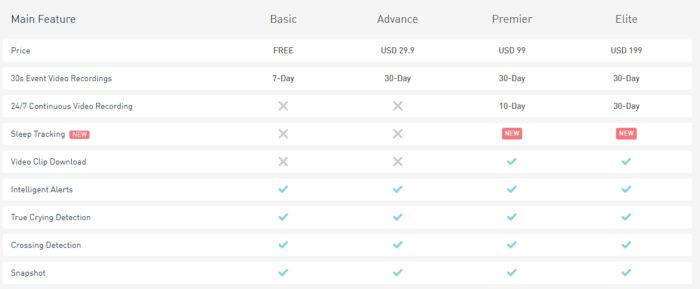
5. Type of Alerts
Similarities: Cubo Ai vs Nanit Plus vs Lollipop can send push notifications to your smartphone even when the screen is off. Additionally, they all have the VOX feature (voice and movement activation). That means they will send you an alert when they detect a baby’s cry.
Differences: For Cubo Ai, you can receive a push notification when your baby’s mouth and nose are covered, your baby rolls over, your baby is sleeping face down, or your child enters a motion detection zone that you have defined.
Besides sound and movement, Nanit Plus can also alert you when it doesn’t detect the baby’s breathing motion. As we mentioned before, you will need the Nanit vest in order to use this feature.
Lollipop can send you an alert when your child makes loud noises, cries, or tries to climb out of the crib.
6. Split Screen
Differences: The only baby monitor among these three that have a split-screen feature is Lollipop monitor. The multi-streaming mode allows you to monitor multiple rooms on the same screen. You can get as many cameras as you want.
7. Power Source
Similarities: All three monitors require you to plug them into the wall at all times.
8. Mounting Type
Differences: Cubo Ai comes with hardware for two ways to mount. It comes with poles for you to mount the monitor on the crib or free stand on the floor, as well as a table stand. There is no hardware to mount Cubo Ai on the wall.
Nanit Plus comes with a stand so that you can mount the monitor against the wall. You have the option to purchase a multi-stand if you prefer to place the monitor on a desk.
Lollipop is the most veritable one when it comes to mounting methods. The lollipop monitor features a design that looks like a lollipop with a bendable leg. Therefore, you can easily wrap it on the baby’s crib. Additionally, you can bend the leg into a circle so that the monitor can free stand on a table. The packaging also comes with a wall-mount on which you can wrap the monitor.

Which One Is the Best: Cubo Ai vs Nanit Plus vs Lollipop Baby Monitors
After reviewing the comparisons of Cubo Ai vs Nanit Plus vs Lollipop Baby Monitors, which is the right one for you? We can’t answer this question without knowing your specific needs and situation. But the conclusion of our analysis can help you make a better decision.
If you are looking for the best smart baby monitor that provides lots of data points and metrics, Cubo Ai Plus Smart Baby Monitor is the one to go with. It can alert you when your child is crying, not sleeping properly, or enters a danger zone defined by you.
If you are looking for a popular smart baby monitor that is capable of tracking baby’s breathing, then Nanit Plus Smart Baby Monitor is the best option. Though it lacks some features that Cubo Ai provides, Nanit Plus is less expensive and has fewer connection errors.
Lollipop Baby Monitor is a great choice if you need to monitor multiple rooms at once. It is the only monitor that offers a multi-screen mode. The downside is that many advanced features of Lollipop require separate purchases or a subscription.
Product Reviews
1. Cubo Ai Plus Smart Baby Monitor
Top Pros:
Top Cons:
Cubo Ai Plus is a great representative of how modern technology can help make parents’ lives easier.
Cubo Ai is one of the first baby monitors that use AI (artificial intelligence) technology to read a baby’s behavior and alert the parents promptly.
With the AI algorithm, the monitor can detect when a baby is sleeping facing down, or when the baby’s nose and face are covered by blankets or toys. Additionally, you can manually define a movement detection zone. If your child enters the dangerous area, the monitor can alert you by sending a push notification.
Another advantage of Cubo Ai baby monitor is that it features 1080p HD image resolution. This makes the night vision more clear and crisp.
You don’t have to get a subscription to use Cubo Ai. But if you do, it costs about $80 a year, and you can get extra features such as downloading playback videos and notification events.
Who Is It for?
Cubo Ai Plus Smart Baby Monitor is for parents who are looking for a high-tech baby monitor that sends various alerts promptly.
Production Specifications
- Dimension: 3.43 x 4.29 x 4.37 inches
- Weight: 9.9 Ounces
- Camera Pan & Tilt: No
- Resolution: 1080p
- Split Screen: No
- Built-in Lullabies: Yes
- Subscription: Yes, optional
- Mount: Wall, crib, free-stand
2. Nanit Plus Smart Baby Monitor
Top Pros:
Top Cons:
Nanit Plus has enjoyed raving reviews from many parents. It rocks 4.6 out of 5 stars on Amazon by thousands of customers.
Besides tracking a baby’s cry, movement, and loud sound, Nanit Plus can also monitor your child’s breathing motion and send you an alert when the breathing pattern is disrupted.
The mobile app of Nanit Plus offers a sleep dashboard for you to see how long your child has slept, how many times you have visited, and how efficient your child’s sleep is.
One thing that distinguishes Nanit Plus from others is the user experience. The monitor and phone app work smoothly without “freezes” or “connection errors”, and the data is reliable and accurate.
Nanit Plus offers Nanit Insights subscription through which you can view longer video recordings and get sleep coaching from child sleep experts.
Nanit Plus doesn’t come with a free stand but you can purchase one separately.
Who Is It for?
Nanit Plus Smart Baby Monitor is the best overall baby monitor that is reliable and easy to use.
Production Specifications
- Dimension: 3.3 x 3.5 x 1 inches
- Weight: 1 pound
- Camera Pan & Tilt: No
- Resolution: 960p
- Split Screen: No
- Built-in Lullabies: Yes
- Subscription: Yes, optional
- Mount: Wall, free-stand
3. Lollipop Baby Monitor
Top Pros:
Top Cons:
Lollipop baby monitor is the least expensive model among all the three monitors we evaluated today. However, it doesn’t mean that it has fewer features.
Comparing to the other two monitors, Lollipop requires a separate sensor in order to track the temperature of humidity in the baby’s room. It makes sense because many parents don’t really care about these two metrics, so why pay more for features you don’t need?
Besides its attractive appearance, Lollipop monitor can be mounted on the crib or self stand without any other hardware. If you prefer to mount it on the wall, you can use the wall mount bar that comes in the package.
Lollipop is also the only one that allows you to monitor multiple rooms on a single screen.
Lollipop offers four levels of subscription plans. The Basic plan is free, but to many parents’ disappointment, it doesn’t offer sleep tracking. You can only get the sleep analysis data if you purchase a plan that costs $100 or $200 annually.
Who Is It for?
Lollipop Baby Monitor is for parents who are looking for a budget option that offers flexibility to pay for extra features.
Production Specifications
- Dimension: 11.7 x 3 x 1.6 inches
- Weight: 2.53 Pounds
- Camera Pan & Tilt: No
- Resolution: 720p
- Split Screen: Yes
- Built-in Lullabies: Yes
- Subscription: Yes, optional
- Mount: Wall, crib, free-stand
Final Words
We hope that our detailed analysis and comparison has shed some light on the pros and cons of Cubo Ai vs Nanit Plus vs Lollipop baby monitors. Our conclusion is that Nanit Plus Smart Baby Monitor is the best overall option for most families.
Of course, if you are a worrywart and prefer a high-tech solution that can send you different types of alerts, Cubo Ai Plus Smart Baby Monitor is the best one for you.
If you are more budget conscious and would rather only pay what you need, then Lollipop Baby Monitor provides such flexibility.

Cecilia Yeung is a successful entrepreneur and product researcher. She has a background in psychology and children’s education. As a working mother of two, she loves to write about children’s education and development.
